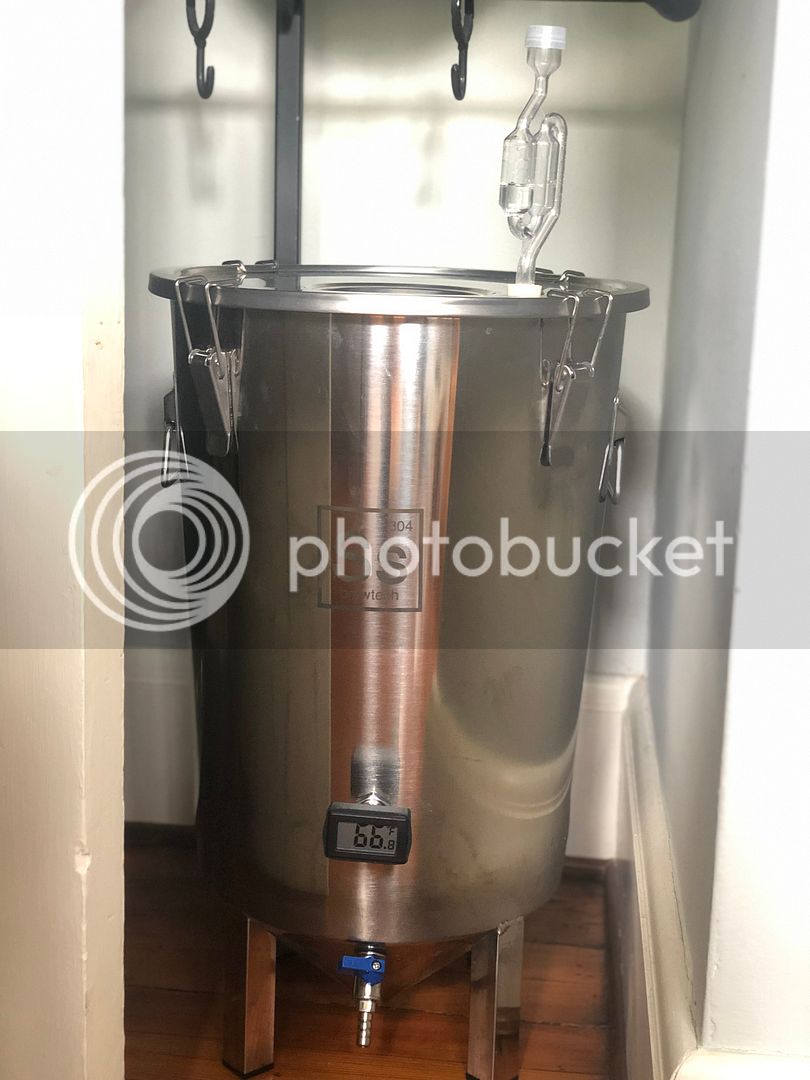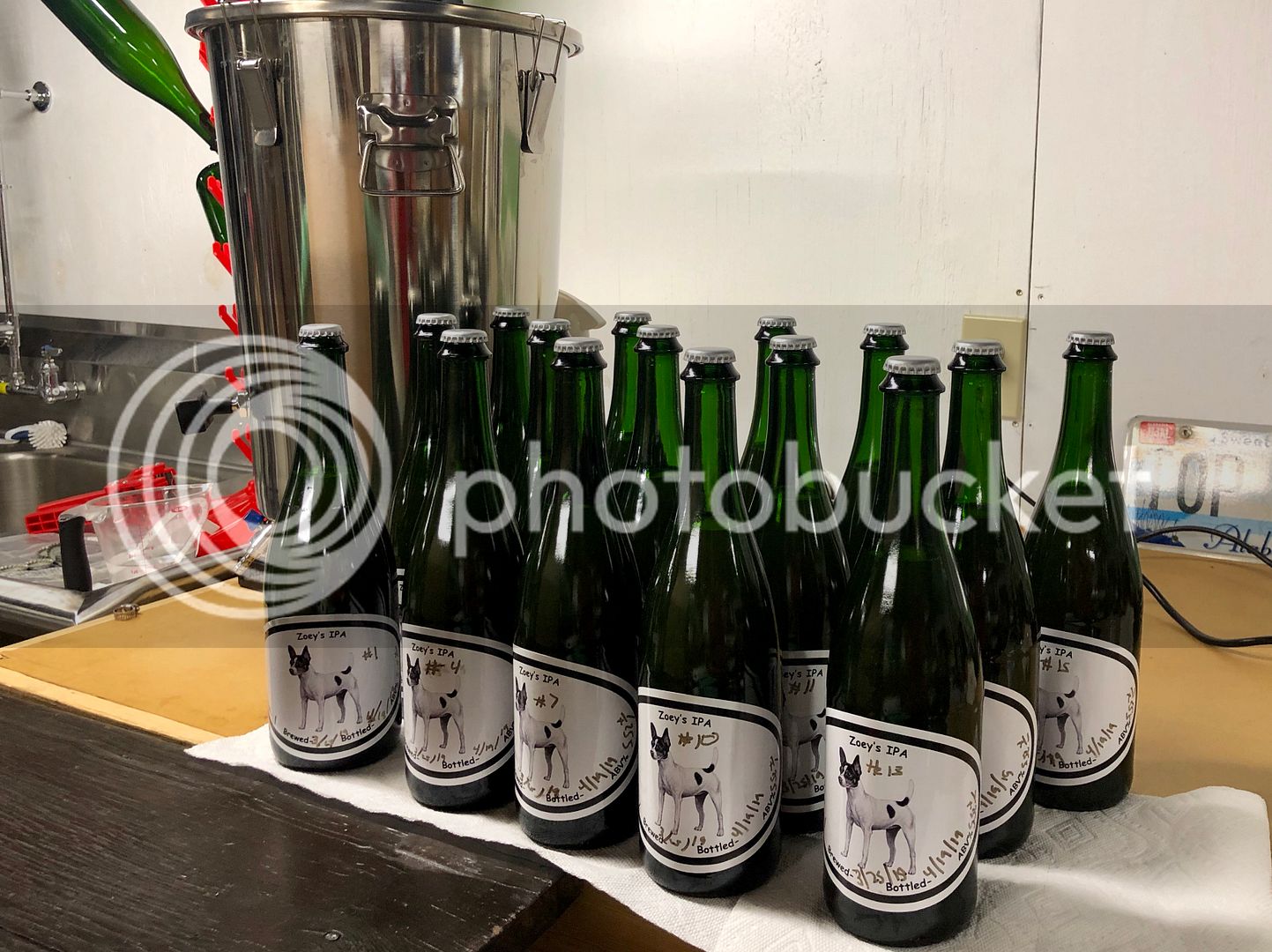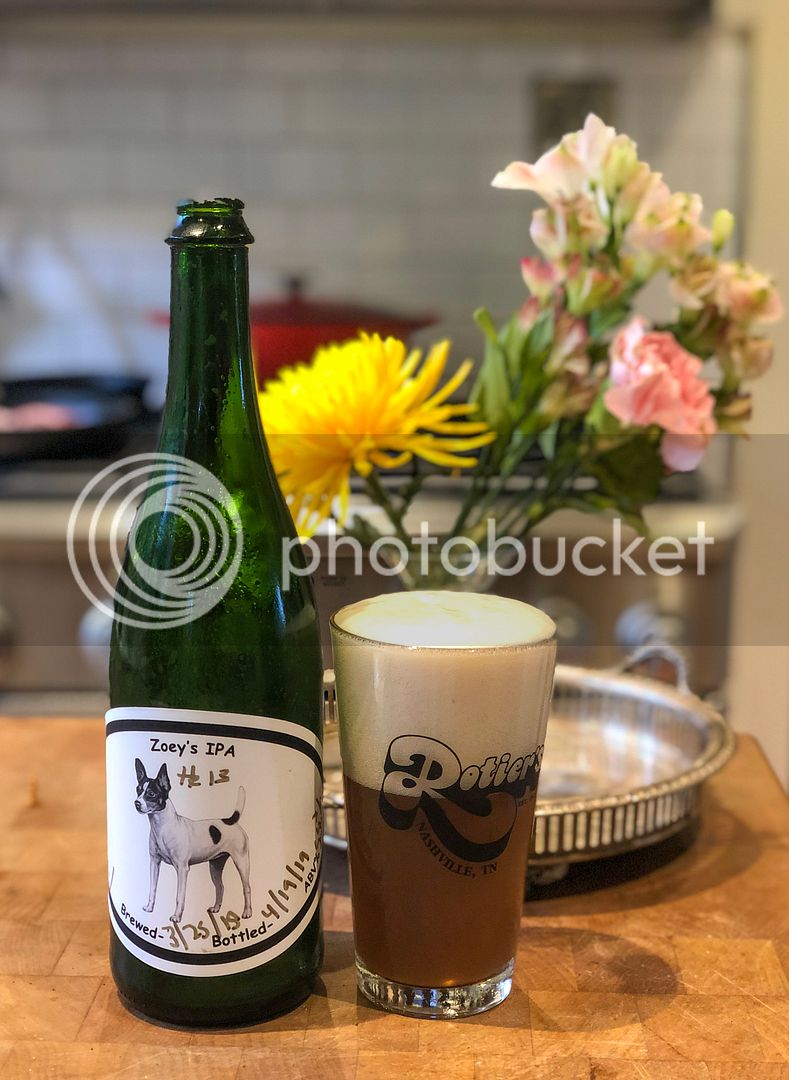Hello All Homebrewers,
This is my first post so be easy on me!
I need some advice. I did my first AG brew this Monday and I have a few questions regarding fermentation time and bottling time.
Mondays AG brew went ok, I missed my mashing temp of 153 for 90min for a mash temp of 148-149 for 90min. Fly sparging went ok, it took 35 min @175 tried hard to dial in the flow rate. Boiled for 90 min and added to fermenter. OG 1.053 (after boil), currently fermenting @66F in my basement.
Recipe I followed:
IPA (5gallon Batch)
8.75lb 2-Row Pale Ale Malt
.5lb Crystal Malt
3oz Kent Golding hops (add at boil)
1oz Fuggles (add 70 min in)
White Labs Long Fog Ale Yeast
Mashing temp @ 153 for 90min
Boil for 90min
Ferment for 9 days and rack to secondary fermenter for 21 days and bottle.
Question 1: Can I bottle after 9 days of fermentation? Is there a significant advantage to secondary fermentation for a few weeks prior to bottling (depending on my recipe)?
Questions2: Did I botch my recipe with my low mash temp or can I expect a drier beer.
Thanks,
LC
This is my first post so be easy on me!
I need some advice. I did my first AG brew this Monday and I have a few questions regarding fermentation time and bottling time.
Mondays AG brew went ok, I missed my mashing temp of 153 for 90min for a mash temp of 148-149 for 90min. Fly sparging went ok, it took 35 min @175 tried hard to dial in the flow rate. Boiled for 90 min and added to fermenter. OG 1.053 (after boil), currently fermenting @66F in my basement.
Recipe I followed:
IPA (5gallon Batch)
8.75lb 2-Row Pale Ale Malt
.5lb Crystal Malt
3oz Kent Golding hops (add at boil)
1oz Fuggles (add 70 min in)
White Labs Long Fog Ale Yeast
Mashing temp @ 153 for 90min
Boil for 90min
Ferment for 9 days and rack to secondary fermenter for 21 days and bottle.
Question 1: Can I bottle after 9 days of fermentation? Is there a significant advantage to secondary fermentation for a few weeks prior to bottling (depending on my recipe)?
Questions2: Did I botch my recipe with my low mash temp or can I expect a drier beer.
Thanks,
LC


![Craft A Brew - Safale S-04 Dry Yeast - Fermentis - English Ale Dry Yeast - For English and American Ales and Hard Apple Ciders - Ingredients for Home Brewing - Beer Making Supplies - [1 Pack]](https://m.media-amazon.com/images/I/41fVGNh6JfL._SL500_.jpg)

























































